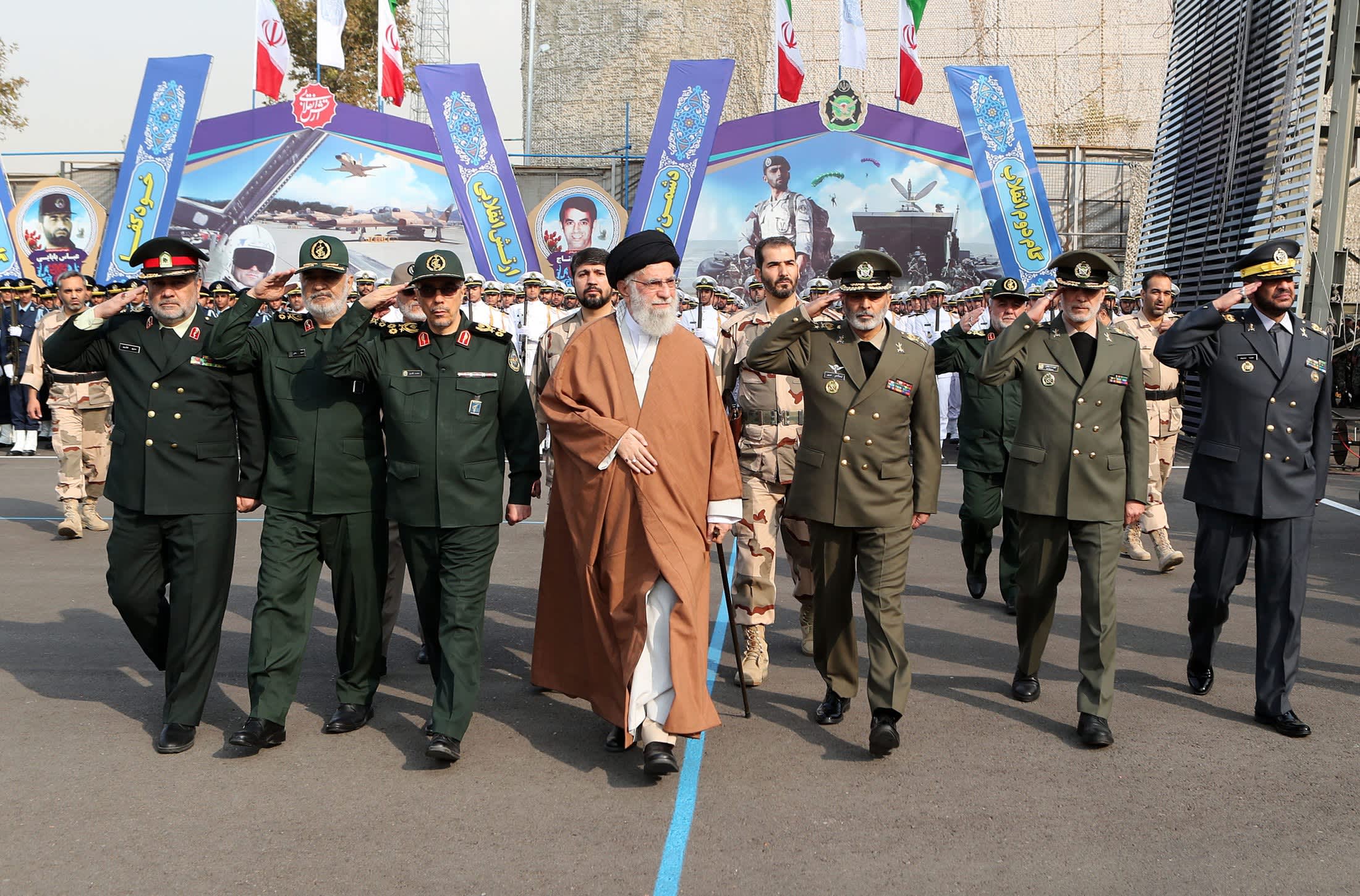
Iranian Supreme Leader Ayatollah Ali Khamanei (C) and Islamic Revolutionary Guard Corps commander Hossein Salami (L2) participate in the Khatam al-Anbia Air Defense University graduation ceremony in Tehran, Iran on October 30, 2019.
Iranian Supreme Leader Press Office | Anadolu Agency | Getty Images
Iran attacked U.S. targets this week after the killing of top Iranian general Qasem Soleimani in an American airstrike, leaving some investors questioning if the situation would lead to war.
Officials from both countries have said they're not seeking an all-out war. Many geopolitical experts said Iran — more than the U.S. — cannot afford to get drawn into war. That's partly due to the Islamic Republic's weakened economy after years of punishing sanctions.
To be clear, updated data on Iran's economy from official sources is not readily available.
Here's a look at six charts that might shed some light on the state of the Iranian economy.
Economy in recession
International sanctions to rein in Iran's pursuit of a nuclear program have for years crippled the country's economy.
Iran received some sanctions relief when it agreed on a deal with six major powers in 2015 to curb its nuclear work. But President Donald Trump reinstated U.S. sanctions on Iran in 2018, which once again sent the economy into a tailspin.
Oil sector declines
Iran is estimated to have the world's fourth-largest crude oil reserves, according to the World Bank. Much of the country's economic growth and government revenues depend on the sale of crude oil.
But restrictions on the sale of Iranian oil were among the U.S. sanctions that Trump reinstated two years ago. That's one of the major reasons why forecasters, including the International Monetary Fund, expect the production and exports of Iranian crude oil to decline.
Shrinking trade
The fall in Iranian oil exports and international restrictions placed on other sectors — such as banking, mining and maritime — have caused the country's total trade with the world to shrink.
The IMF estimated the country's exports could fall below its imports in 2019 and 2020.
Rising costs of living
The Central Bank of Iran has maintained a steady official exchange rate of 42,000 Iranian rials per U.S. dollar. But the currency is much weaker than that in the unofficial market, weakening to as much as 140,000 rials per dollar this month amid heightened tensions with the U.S., according to foreign exchange website Bonbast.com.
The weak local currency contributed to high levels of inflation in Iran — which the World Bank said peaked at 52% in May 2019. That raises the costs of living in Iran at a time when job opportunities are lacking.
High unemployment rate
One main implication of a stagnant or declining economy is rising unemployment rate, which has been seen in Iran.
The lack of employment opportunities could worsen poverty in Iran, the World Bank said. It noted that the country's poverty, measured by the proportion of people whose purchasing power is below $5.50 per day, had risen from 8.1% in 2013 to 11.6% in 2016.
Widening fiscal deficit
The Iranian government has limited finances to roll out measures in order to lift the country's economy. That has been exacerbated by overall subdued economy activity and restrictions on oil sale overseas, due to the sanctions in place.
Such fiscal constraints would limit Iran's ability to fund a war, although some experts said Tehran could still ramp up its aggression against the U.S. by using its proxy forces across the Middle East, stretching from Syria and Yemen to Afghanistan.
Read More
